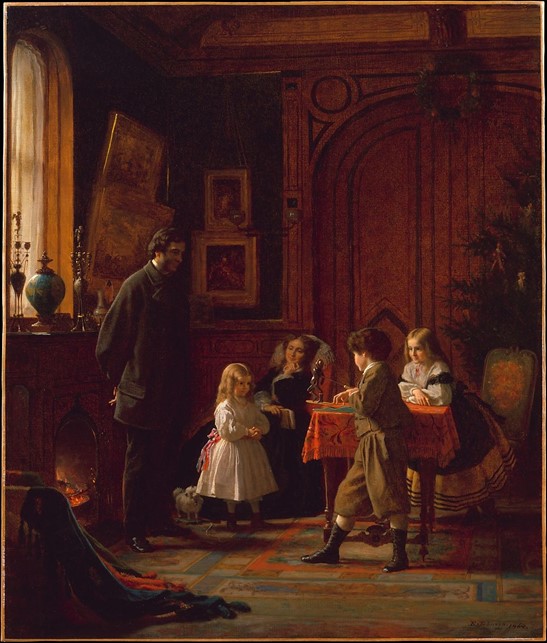
Christmas-Time, The Blodgett Family, 1864, oil on canvas, 76.2 x 63.5cm, the MET, NY
https://www.metmuseum.org/art/collection/search/11258
I heard the bells on Christmas Day / Their old, familiar carols play, / And wild and sweet / The words repeat / Of peace on earth, good-will to men!… Christmas Bells by Henry Wadsworth Longfellow (1807-1882)… a wonderful way to introduce Christmas-Time by Eastman Johnson and Wish you all Merry Christmas!!! https://www.nga.gov/collection/artist-info.1423.html and https://poets.org/poem/christmas-bells
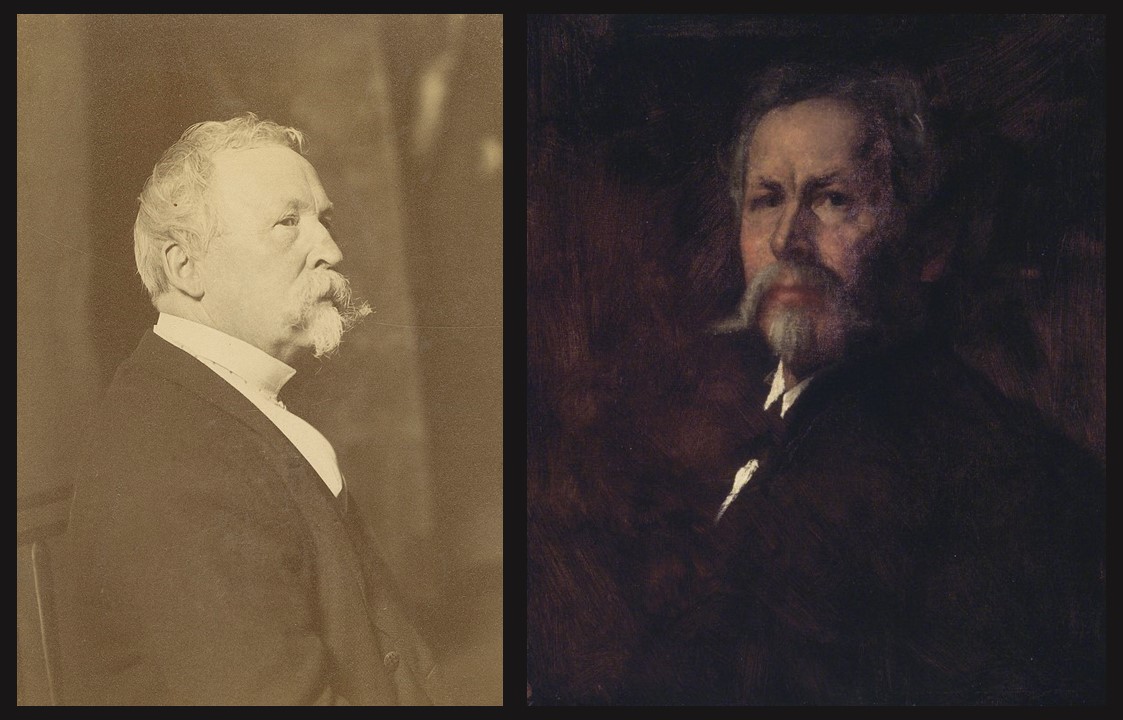
Eastman Johnson, 1890s, albumen print (cabinet card) by Edwin S. Bennett (detail), National Gallery of Art, Washington, DC, Department of Image Collections
Self-portrait of Eastman Johnson, circa 890, oil on canvas, 60.9 x 50.7 cm, Brooklyn Museum
https://en.wikipedia.org/wiki/Eastman_Johnson
In 1846 Eastman Johnson was in Boston, where he was commissioned to create portraits of several of Henry Wadsworth Longfellow’s friends and family members. At the time, Eastman Johnson was a young man of twenty-two, but his draftsmanship was accomplished and thus he drew the attention of the established poet and Harvard professor Henry Wadsworth Longfellow. All of these portraits hang today in the Vassall/Craigie/Longfellow House in Cambridge, Massachusetts, a site that offers unique opportunities to explore 19th-century literature and arts. https://www.mainememory.net/artifact/15896 and https://www.nps.gov/long/index.htm
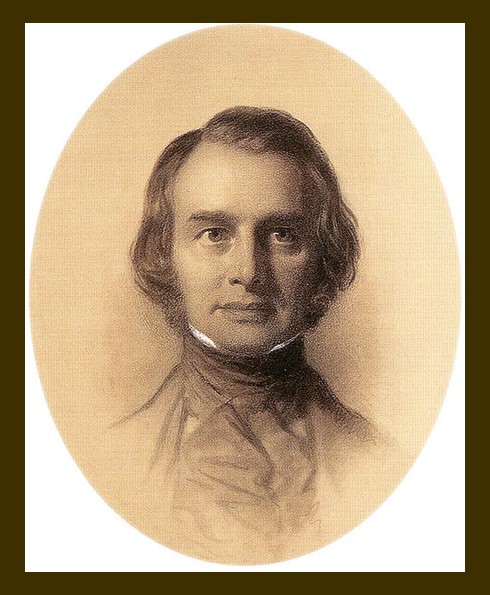
Portraits of Henry Wadsworth Longfellow, 1846, Crayon and Chalk on Paper, 21 x 19 in. Oval, Vassall-Craigie-Longfellow House
Scanned from Eastman Johnson: Painting America https://commons.wikimedia.org/wiki/File:Eastman_Johnson_portrait_of_Longfellow.jpg
Young Eastman Johnson was pleased to place himself under Henry Wadsworth Longfellow patronage, but like his patron, his dream was to travel and study in Europe… and this is exactly what he did in 1849, “when he travelled to Düsseldorf, Germany, and received rigorous training in drawing at that city’s academy. More congenial, however, was the time he spent in the studio of Emanuel Leutze,” the German/American artist who painted in 1851 Washington Crossing the Delaware “where he concentrated on painting. In 1851 he went to London to see the Universal Exposition and then relocated to The Hague, remaining for over three years. His lengthy stay at The Hague was somewhat unusual for an American artist, but he apparently found much inspiration in the Dutch Old Masters as well as ready patronage through August Belmont, the wealthy American ambassador. His European education ended with several months spent in the Parisian studio of Thomas Couture before the death of his mother brought him home in 1855.” https://www.nga.gov/collection/artist-info.1423.html
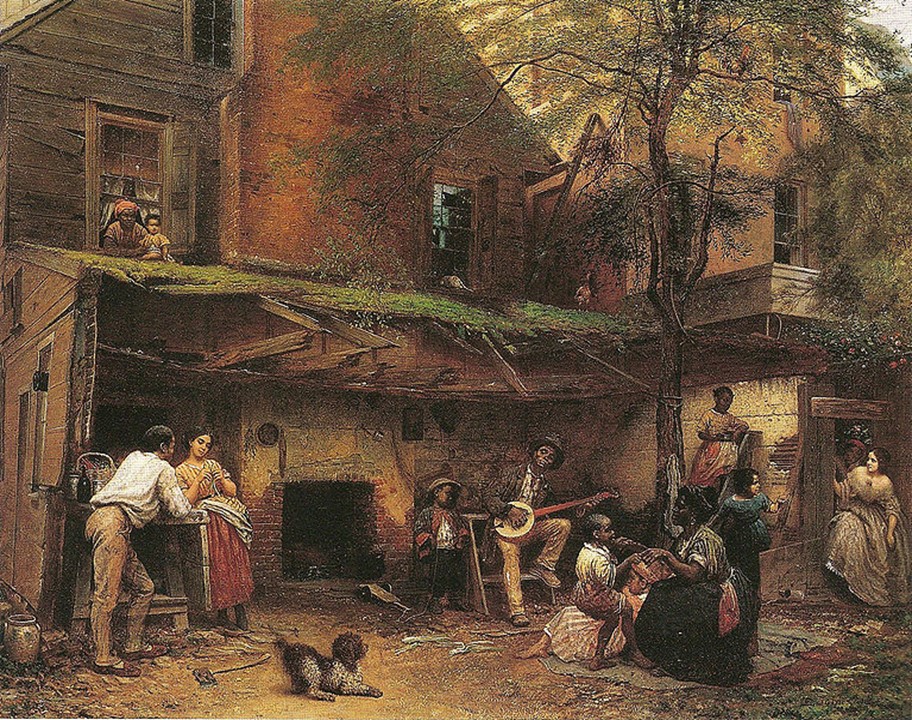
Negro Life at the South, 1859, oil on canvas, 129.5×154.9 cm, The New-York Historical Society, The Robert L. Stuart Collection
Back in the United States, Eastman Johnson spent his time painting in his rented studio in New York City or travelling extensively, visiting members of his family in Washington, D.C., or Lake Superior, where he sketched members of the Chippewa Tribe. His reputation was established in 1859 when, at a time when slavery was heatedly debated, he presented in a New York exhibition a painting of the backyard of his father’s house in Washington, D.C. titled Negro Life in the South. https://www.nyhistory.org/exhibit/negro-life-south-0
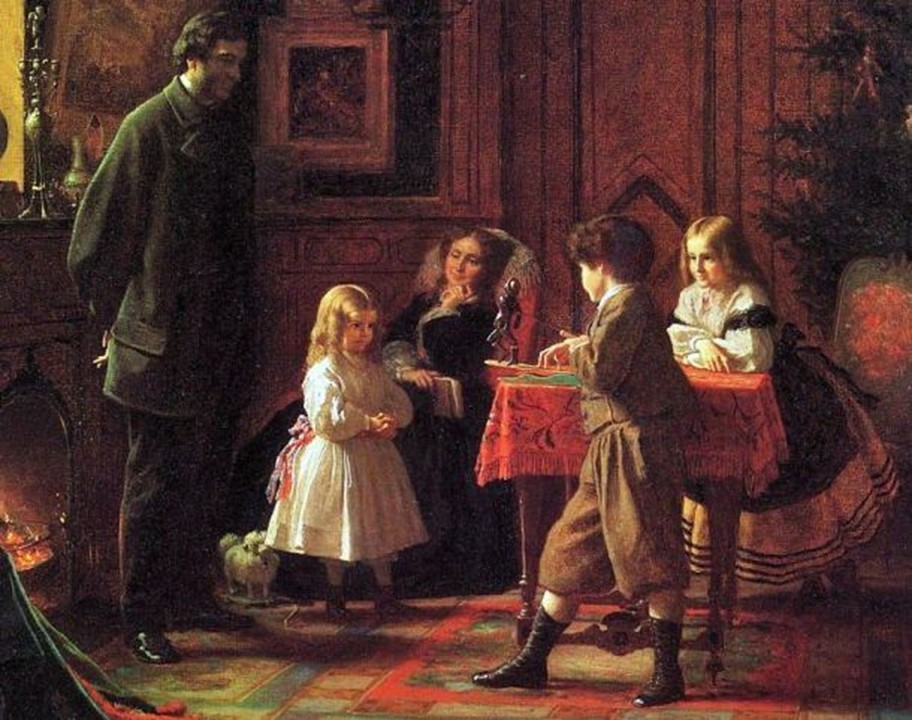
Christmas-Time, The Blodgett Family (detail), 1864, oil on canvas, 76.2 x 63.5cm, the MET, NY https://www.metmuseum.org/art/collection/search/11258
In 1864, he was commissioned to paint Christmas-Time, The Blodgett Family, a group portrait with interesting narrative elements. “It shows William Tilden Blodgett (1823–1875), a supporter of the Union cause and a founding trustee of the Metropolitan Museum, with his family in the Renaissance Revival parlour of their house at 27 West 25th Street. Depicted during the Civil War, at a time of urban upheaval, the serene interior decorated for Christmas embodies the best sentiment of home, as a critic observed in 1865.” https://www.metmuseum.org/art/collection/search/11258
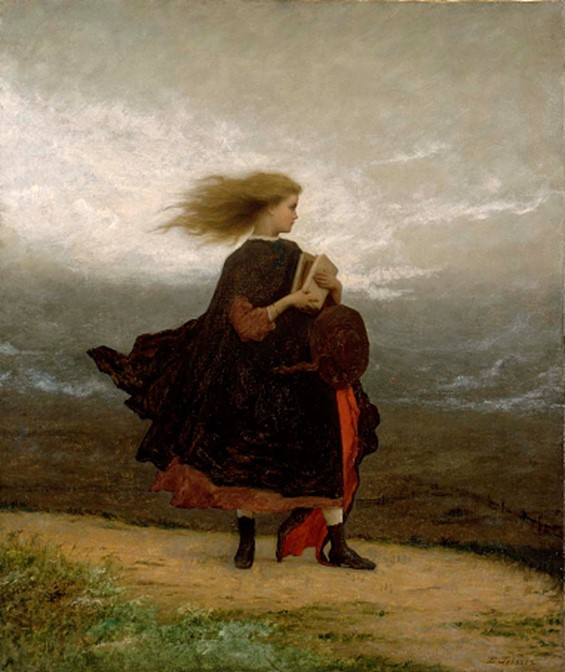
The Girl I Left Behind Me, 1872, oil on canvas, 106.7 x 88.7 cm, Smithsonian American Art Museum, Washington, DC
One of the foremost painters of American life, Eastman Johnson’s reputation grew further with paintings like the A Ride for Liberty—The Fugitive Slaves, of 1862 or The Wounded Drummer Boy, of 1864-1870 or The Girl I Left Behind Me, of 1872. He was financially comfortable and professionally successful. He lived in a large house in Manhattan and vacationed on the island of Nantucket, the scene of many of his paintings. He was an active member of the National Academy, the Century and Union League Clubs, the Metropolitan Museum, and even the Society of American Artists. He is remembered for his humour and kindness in helping other artists, as a good story-teller, a short, rotund kind of a man. https://www.brooklynmuseum.org/opencollection/exhibitions/1664
For a Student Activity on It’s Christmas with Eastman Johnson, please… Check HERE!